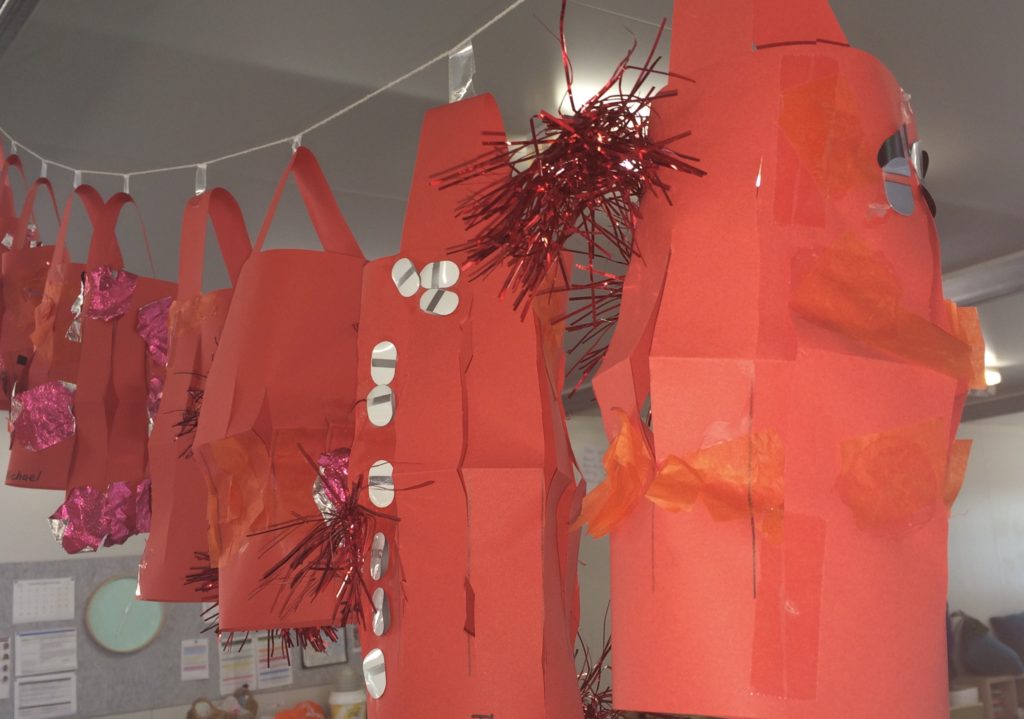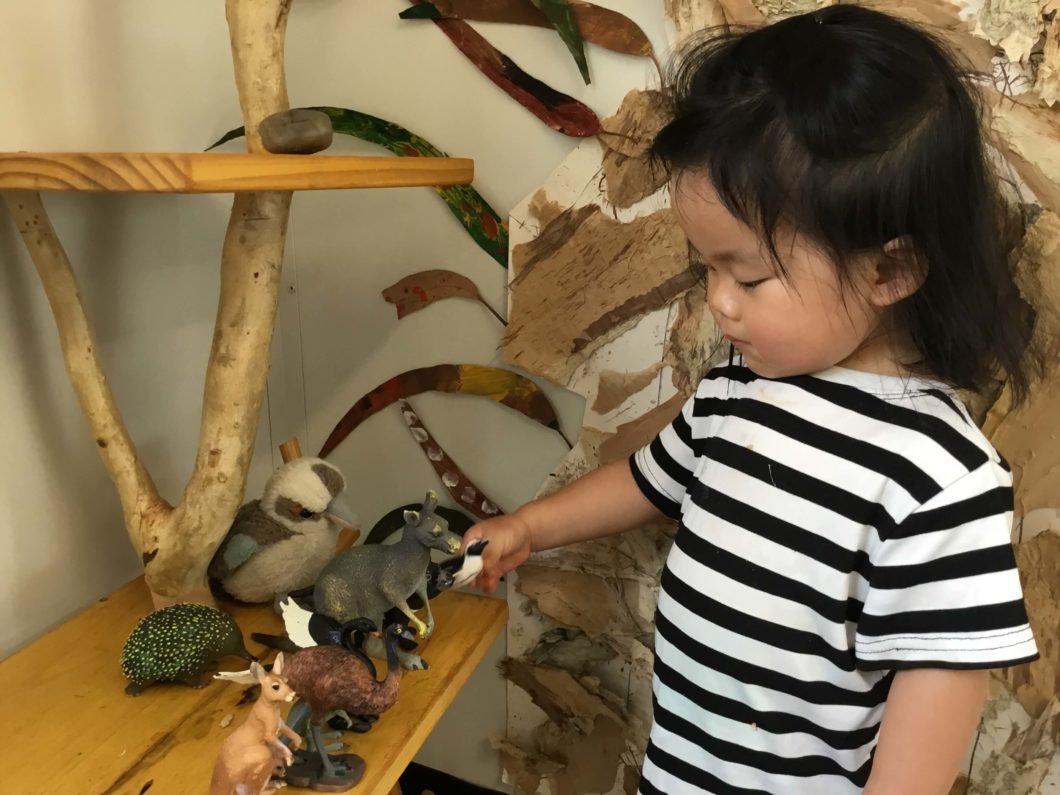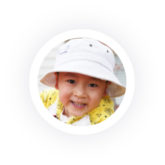One of the foundations of early learning at Choklits child care centre in Ringwood is to enable children to realise their potential as an individual and member of a group. It is both the individual learning and the learning as part of a wider group that I’d like to focus on through exploring some recent experiences at Choklits.
“Knowing where and with whom you belong is integral to human existence. Children belong first to a family, a cultural group, a neighbourhood and a wider community. Belonging acknowledges children’s interdependence with others and the basis of relationships in defining identities.”
The month of January brought two experiences celebrated both at Choklits and in the wider community. The first was Lunar (Chinese) New Year (January 25th) and Australia Day (January 26th).
Lunar New Year is a popular event with many of our families, with several identifying as celebrating the traditions of wishing luck and fortune. The centre was adorned with symbols to reflect this, as well as the continued exposure of all to the way that different people communicate in many languages and use symbols to represent this.

The children were given opportunities to read and act out the story of Nian the Dragon, using a beautifully illustrated story given by a talented family. Banging on a drum was a much enjoyed way of recreating the story, and one that the children relished in joining in on. The drumming was so successful that we integrated it into the learning program by using turns on the drum as a transition to wash hands at lunch.
Creativity was unleashed by colouring and sticking together dragons, making red lanterns and practising a Chinese symbol with calligraphy brushes. These beautiful artworks were proudly displayed in the room, which helps children to gain a sense of belonging in a space decorated and owned by them.
The program and learning were greatly enhanced by collaborating with families; in fact, without the input of parents, grandparents, family and friends, the tools to teach the different ways of celebrating wouldn’t have been authentic. From impromptu pronunciation lesson (the lilting tones of Mandarin sure can be tricky!), to stories and recollections of how the families themselves celebrated, we gained insights and ideas about authentic and engaging experiences. The comments and feedback from families told us that the Choklits community were proud to see their culture reflected within the program, as well as learning about traditions of others.
Our next event was one that required sensitive thought about meaning and interpretation. Australia Day is a tradition that evokes a wide range of responses; from pride to shame, anger to the simple act of sharing a barbecued sausage. In taking into account the entire Choklits community’s needs and feelings about the event, educators had many lively and thought-provoking discussions, amongst themselves and with families. The conclusion reached was that our learning would focus on the families who represent Choklits and the environment (like the landscape and animals). This allowed for inclusion of our many languages, faces and other characteristics that represent the diverse meaning of all of us who make up Australia (without compromising the feelings of our indigenous families).
With that in mind, we begun our family trees, a display with photos representing the many families within Choklits. Natural resources were chosen (paper bark, leaves, tree branches) to connect children with nature and appreciation of the resources given to us from the outside world. Our daily acknowledgement of the traditional land owners (the Wurundjeri mob) also teaches us to appreciate the land we are given to learn and play on, and what better way to reinforce this then collecting and displaying the gifts given freely by the garden outside!
As with many learning and everyday life experiences, literacy and illustrations added a rich component to exploring about the country we live in.
Favourite Australian authors included John Marsden (“Rabbits”) and Bronwyn Bancroft (“Why I Love Australia), whose detailed pictures and poetic words capture the beauty and themes of the country we are lucky enough to live in.

Our final learning experience was one that allows for introducing an everyday learning culture, rather than a one-off or week long learning event (reflecting Choklits’ philosophy of embedding authentic learning experiences in everyday experiences consistently). Our “Good Morning Song” teaches us to connect with Australian animals and one of many indigenous tongues (the Woi Wurrung language spoken by the Wurundjeri people). The children seemed to take away strong recollections by connecting familiar animals (like the kangaroo and wombat) with their english and Woi Wurrung names. The weeks and months to come will provide many more opportunities to introduce and become familiar with more of the languages of the families around us; a great way to learn about the diversity and representation of our own and other people in our world.
Why is it important to reflect a rich and diverse culture within the program?
By creating a program that incorporates each families’ culture, the Choklits family feels a sense of belonging; one which each educators strives to make sure each family feels included in. Events such as Australia Day and Lunar New Year allow us to include the families’ points of view and build the program into one that reflects the children’s home and world around them.
By creating experiences that start from open-ended or intentional learning (like colouring, cutting, reading books) and build on learning about others, the children become aware of different ways of being and living. We hope that instilling an appreciation of their own identity and the identity of others grows into an accepting generation of learners, eager to find out what makes our community such a richly diverse one – and the many positives to be gained from sharing and appreciating both ourselves and one another.
At home, you might like to share your traditions and cultural celebrations with your early learning centre through photos, a visit to the centre to share a story or song or a quick conversation with your child’s educators.
You might also like to connect with your child by prompting them to share their insights and viewpoints using the the observations and photos shared by your child’s educators.
Choklits blog post authored by Dee Wasserfall, Choklits Child Care Kindergarten Educator.
PS- Choklits is a busy place so join the conversation on Facebook and follow us on Instagram for updates from in and around our great Ringwood community!
Choklits Child Care, 319 Canterbury Road, Ringwood (opposite the Ringwood Golf Course near the Canterbury Road Eastlink offramp). Our location makes our child care centre easy to access for families in Ringwood, Vermont, Mitcham, Wantirna, Bayswater, Heathmonth and from families in suburbs living further afield as well.


